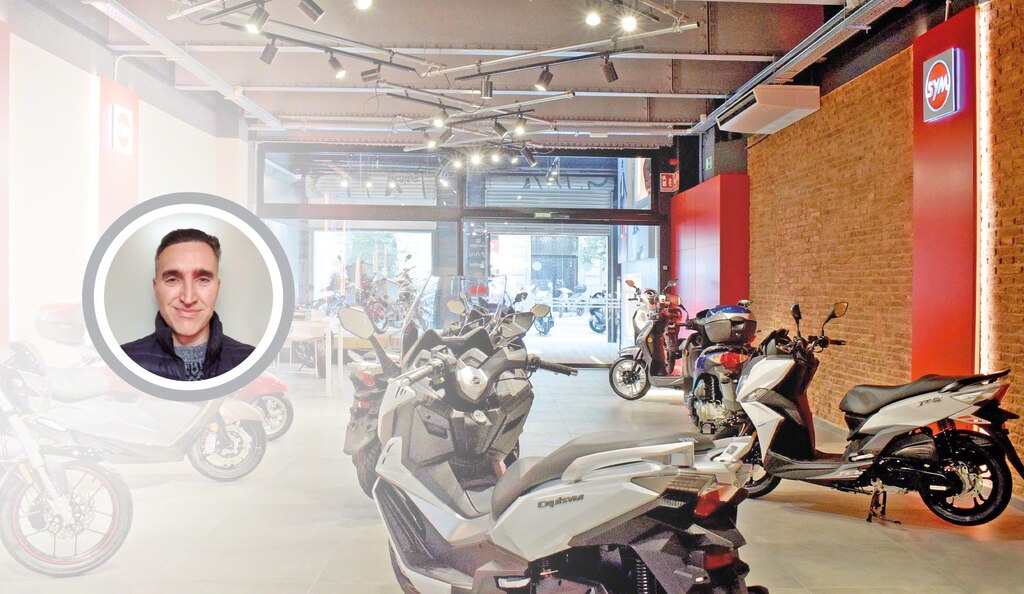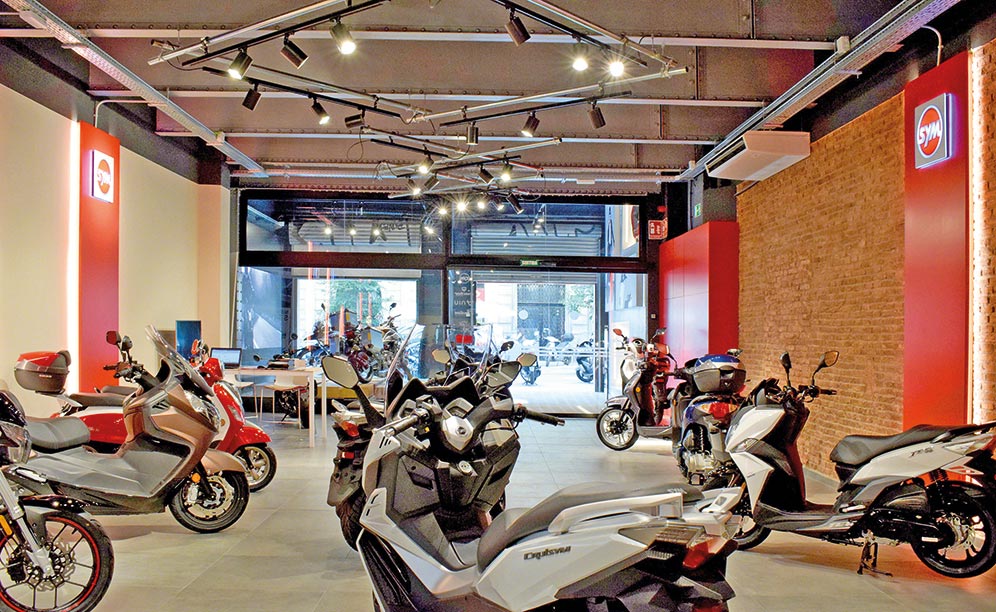
“Logistics is a fundamental part of our business”
Interview with Jesús García of Motos Bordoy
Active since 1971, the Motos Bordoy Group is one of the leading companies in the Spanish two-wheeler sector. The business is the exclusive importer of the SYM and NIU brands in Spain. Since 1999, it has featured its own brand, Macbor. The organisation has several dealerships in Barcelona (MOTOS BORDOY Barcelona), where it sells these and other market-renowned brands such as MV Agusta, Indian Motorcycles and Husqvarna (motorcycles and e-bikes). In its two facilities in Barcelona and its dealerships, Mecalux’s Easy WMS warehouse management software monitors a wide variety of products in real time. Digitising its supply chain has enabled the Motos Bordoy Group to provide better customer service and adapt easily to market changes.
Mecalux interviews Jesús García, Spare Parts Department Manager at the Motos Bordoy Group, to talk about how digitization is key for responding to the logistics challenges facing companies in the motorcycle sector.
-
According to Spain’s National Association of Companies of the Two Wheels Sector (Anesdor), demand for motorcycles and mopeds in this country maintained an upward trend during the first half of 2022. What impact has the increase in sales had on the Motos Bordoy Group's logistics processes?
Over the last few months, we’ve had difficulties in planning medium- and long-term logistics operations. The fact is, 2022 has been an unusual year. In August, for instance, we sold 2,000 more motorcycles compared to the same period last year. It’s been really hard to satisfy product demand.
-
How have you coped with this rising demand?
We had to reorganise our logistics operations to ensure adequate goods flows. For example, we reached an agreement with freight brokers to reserve a weekly slot on ships to guarantee the supply of containers from Asia. But there are processes that are out of our hands and that we can’t change. Manufacturers, for instance, have had to delay order deliveries because they didn’t have materials. What does depend on us — and which we were able to improve — are our logistics processes. Our priority is to provide our customers with good service: when we receive products, we make sure we distribute them as soon as possible.
It used to take us four days to deliver a motorbike to a customer. Now, we’ve reduced the time to half or even 24 hours
-
How has digitising your logistics operations helped you to absorb the upturn in demand?
Mecalux’s Easy WMS warehouse management system is integrated with our ERP (enterprise resource planning) software. With this configuration, we’re prepared to respond to market changes. Digitising our logistics processes has allowed us to optimise operations and shorten customer lead times. For example, it used to take us four days to deliver a motorbike to a customer. Now, we’ve reduced that time to half or even 24 hours. There have been times when we’ve received as many as 80 containers at once with products that need to be identified and stored. With Easy WMS, the improvement in all operations is evident: we’re serving more than 1,500 motorcycles to our entire network in less than five days.
-
How have you optimised your logistics processes with Easy WMS?
We’ve adapted the software to meet our needs. The system analyses our workflows and is programmed to facilitate goods entries and exits. One of the advantages Easy WMS has brought us is the organisation of products by their level of demand. Having the items properly distributed is crucial for us, even more so taking into account that our warehouses are over a kilometre long. This means that our pickers have to walk long distances to locate merchandise. So, fine-tuning the work routes has saved us a lot of time.
-
How has digitisation enhanced the Motos Bordoy Group’s logistics operations?
Our company has undergone a complete transformation in recent years. In the beginning, we managed 1,000-2,000 SKUs with the help of the ERP system. Now, with Easy WMS, we have over 100,000 SKUs in stock. We’ve become the fourth largest distributor of motorcycles in Spain, selling 10% of the entire national market. To cope with this growth, we had to move on from manual management to fully digitising our logistics operations. In addition to organising goods inflows and outflows, the WMS sends operators instructions and creates optimised pick paths. The change has really been dramatic.
-

"To cope with the growth, we had to move from manual management to digitisation” The opening of new dealerships has driven the Motos Bordoy Group’s growth. With such a large number of shops and warehouses, how do you organise the work?
With Easy WMS, we’ve streamlined our logistics processes, creating a work model compatible with any of our facilities. This way, when we open new dealerships, we won’t have to reinvent the wheel. We’ll simply put in place the same operations we carry out every day — everyone knows them, and they work perfectly for us.
Easy WMS gives us flexibility, enabling us to efficiently manage a growing number of items. For example, we recently expanded our product portfolio with QJ Motor, a new motorcycle brand, without having to modify operations in our warehouses or dealerships. From day one, we were able to stock QJ Motor’s bikes, send them to the shops and sell them as we do with other brands, e.g., SYM, Macbor and NIU. Standardising our processes has also allowed us to scale up our business. We’ve systematised our receiving, storage and distribution operations to be able to grow and work comfortably with more brands and in more dealerships.
-
How does the Motos Bordoy Group control the status of the goods in its facilities?
We take inventory on a routine rotating basis; that is, we plan periodic counts in one or more areas of the warehouses and dealerships. This gives us a regular overview of the products we have in stock. Performing these cycle counts is less labour-intensive than conducting an annual inventory. Plus, we can’t afford to stop the activity carried out in our facilities to take inventory — that would mean not serving our customers. So these cycle counts work best for us. The WMS also tracks our stock in real time by recording all entries, exits and movements of goods. In fact, we check our cycle counts against the Easy WMS data to identify mismatches and make sure the products are in the best condition.
-
To successfully tackle new challenges in the motorcycle industry, what should the future of logistics look like?
It should be flexible to adjust to changes in demand. For instance, one of the challenges our industry will have to solve in the short term will be electric motorcycles. These vehicles will have a direct impact on logistics because they’re new products with specific storage requirements to take into account.
The motorcycle industry should also make more of an effort to shorten customer delivery times. In our case, we’ve decided to centralise our operations in high-capacity warehouses that store all the goods we need to provide optimal service. This way, we always have stock to satisfy demand. Logistics is a fundamental part of our business. Our warehouses have to be customised to meet our needs so that we can provide the service our customers deserve. In our logistics centres, products and operations have to be meticulously distributed. These are spaces with frenetic activity to ensure delivery in under 24 hours. At the Motos Bordoy Group, we’re constantly reorganising our facilities to optimise them, streamline processes and keep stock moving.
